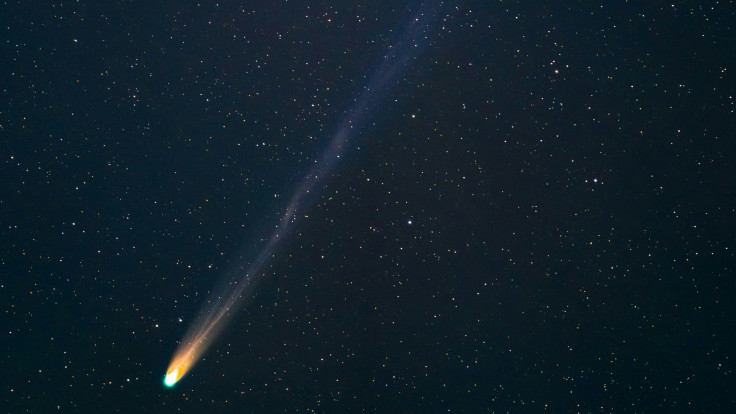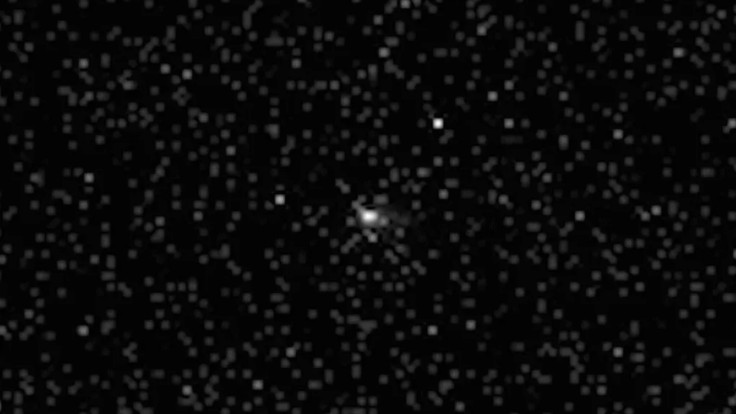3I/ATLAS Reveals Its Intent To Tracking Captain, Avi Loeb Urges Caution
Harvard's Avi Loeb warns 3I/ATLAS could be a 'Trojan horse'. Is it alien tech, or just a comet on its 'blind date' with Earth?

We are on a 'blind date' with the cosmos, and our guest is hurtling through the solar system at 137,000 miles per hour. For months, it was just a mysterious speck, a speck that sparked a wildfire of speculation. But now, that visitor has a name: 3I/ATLAS.
This is only the third time in history we have detected an object from outside our solar system. Its arrival has split the scientific community into two fascinating camps. Is it, as one expert suggests, just an 'ordinary visiting comet'? Or is it, as a top Harvard scientist provocatively asks, a 'visitor to your backyard' whose 'intent' we must figure out? Now, as the object reveals new, anomalous behaviours, that same scientist is urging caution.

The Great Debate Over 3I/ATLAS: Comet or Alien Tech?
The debate over 3I/ATLAS is best understood through its two main proponents. On one side is Dr. Avi Loeb, a Professor of Science at Harvard University and Director of the school's Institute for Theory and Computation. He has become the unofficial 'tracking captain' for 3I/ATLAS.
Loeb does not 'exactly wear a t-shirt to endorse' alien life, but he urges against dismissing the possibility. 'We think about existential threats from artificial intelligence, from global climate change, from an asteroid impact, but we don't discuss alien technology', he said. 'And my advice on a blind date of interstellar proportions is to observe rather than have an opinion to start with'.
As the object's 'intent' becomes clearer, Loeb's warnings have become more specific. He has openly warned against dismissing the 'remote possibility' that 3I/ATLAS is a 'black swan event'. He has even used the analogy of a 'Trojan horse', suggesting that while it may look like an innocent comet, its anomalous nature requires us to consider that it could be a technological object masquerading as a natural one.
On the other side is University of Texas at Arlington Astrophysicist Levent Gurdemir. He provides a more grounding perspective. '3I/Atlas, as much as we can tell so far, is a comet coming from interstellar comet coming from outside of the solar system', Gurdemir stated. He believes the conversation about 'alien forces' with 'high-powered lasers' is misplaced.

What We Know for Sure About the Interstellar 3I/ATLAS
Speculation initially intensified because 3I/ATLAS had not come close enough to our sun to form a tail. However, as it nears its December flyby, a tail has become more visible, strengthening the comet theory.
According to NASA, the object was first reported on 1 July by an Asteroid Terrestrial-impact Last Alert System in Chile, which gives it the 'ATLAS' part of its name. The '3I' simply means it is the third known interstellar object, following 1I/'Oumuamua in 2017 and 2I/Borisov in 2019. It is a 3.5-mile-wide object, and scientists believe it originated from a disk around another star.

Why Avi Loeb Continues to Track 3I/ATLAS
For Dr. Loeb, who frequently writes about 3I/ATLAS on the platform Medium, this event is about more than just one object; it is about scientific curiosity. He continues to track it because its 'intent' seems, to him, to be revealed by its anomalies. He has pointed out that its trajectory is unusually aligned with the planets in our solar system, its composition is reportedly high in nickel, and it has exhibited strange jets.
These are the details that fuel his 'Trojan horse' concerns and his caution that this may not be a simple 'blind date'. He is elated to see the public interest in science, but he warns against the 'social media' effect where people 'have opinions and pretend to be the adults in the room' by ridiculing possibilities.
'I think we should use all assets at our disposal to get as much information as possible', Dr. Loeb said. 'We are entering a new era where we can check if all the objects that are arriving at our backyard from the cosmic street'.
Will 3I/ATLAS Pose a Threat This December?
Despite the 'galactic lure' and provocative questions from Dr. Loeb, most experts agree on one thing: 3I/ATLAS poses no direct threat to our planet.
On 19 December, it will 'fly by' Earth, but it will not be close. Scientists believe it will be some 170 million miles away. 'So that's going to be around twice the distance of Earth and sun, it is going to be passing the Earth on the other side. So there's a lot of distance', Gurdemir explained. This is the counter-argument to Loeb's caution: while Loeb is concerned about the nature of the object, other scientists like Gurdemir are focused on its physical path, which is not on a collision course.
Do not expect to see it, either. Gurdemir notes it is 'not something you can run out to the open country with a telescope to see'. It is best seen through a 'professional and reputable telescope'. By March, the comet will begin leaving our solar system, and our 'blind date' will be over.
As 3I/ATLAS barrels towards its 19 December flyby, the debate over its 'intent' intensifies. While scientists like Levent Gurdemir see an 'ordinary visiting comet', 'tracking captain' Avi Loeb urges caution, warning that its anomalies fit a potential 'Trojan horse' scenario. With the cosmic visitor posing no direct physical threat, the real question is one of nature versus technology.
© Copyright IBTimes 2025. All rights reserved.





















